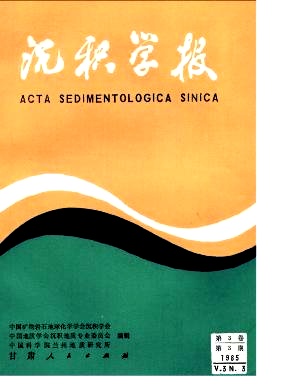HTML
| [1] | (1) Joaas, E. C, and Brown, T, E,,1959: Analysis of iaterlayer mixtures of three clay miaeraltypes by x-ray differaction. Jour. Sedi. Petrol, Vol. 29, pp77-86. (2)Fairbrige, R. W, and Bourgeors, J.,1978: The encyclopedia of sedimentology. Encyclopedia of earth science, Vol, V1. pp149-156, (3)Grim, R, E, and Kulbicki, G,,1961, Montmorilloaite, High temperature reac-tioas and classification. Am, Miner. Yol, 46, pp1329-1389. (4)Grim. R, E,,Bray, R. H. and Bradley, W. F.,193?: The mica in argilleceus sediments. Am, Miner. Vol, 22, pp813-829, (5)Kodama,H.and Dean,R.S.,1980,lllise from Eldorao,Sask-atchewan TheCanadianminer.Vol18,Pat.l,pp109-118 (6)Weaver. C, E, and Pollard, L, D.,1973: The chemistry of clay minerals deve-lopments in (7)Porrenga, D. H.,1968s Non-marine glauconitic illite in the lower Oligocence of Aardeburg, Belgium. Clay Miner. Vol. 7,pp421-430. (8)Rex, R, W,,1964, Athigenic kaolinite and mica as evidence for phase equilibria at low temperature.Clays and Clay Miner, Proc, of the thirteenth national confer- ence on and Clay minerals, pp, 95-104, (9)Divis, A, F, and Mckenaie, J. A.,1975: Experimental authigenesis of phyllosi-llicate from feldspathic sands. Sedimentology Vol. 22, pp147-155. (10)Hoffman, J. and Hower, J,,1979: Clay mineral assemblages as low grade meta- morphic geothermometr, application to the thrust faulted disturbed belt of Mon- tana, U. S, A, (11)Veld, B,,1977: Clays and clay minerals in nature and sythet'ic system Develop- meats. in sedimentoloyg 21 pp54-59. |






 DownLoad:
DownLoad: